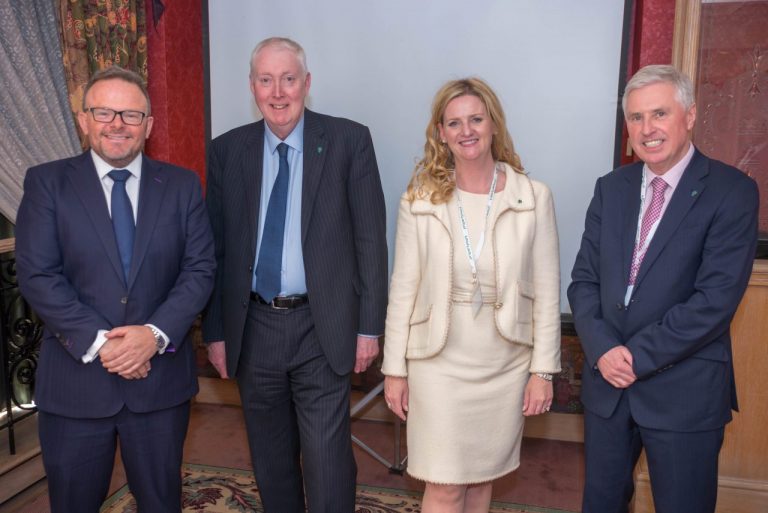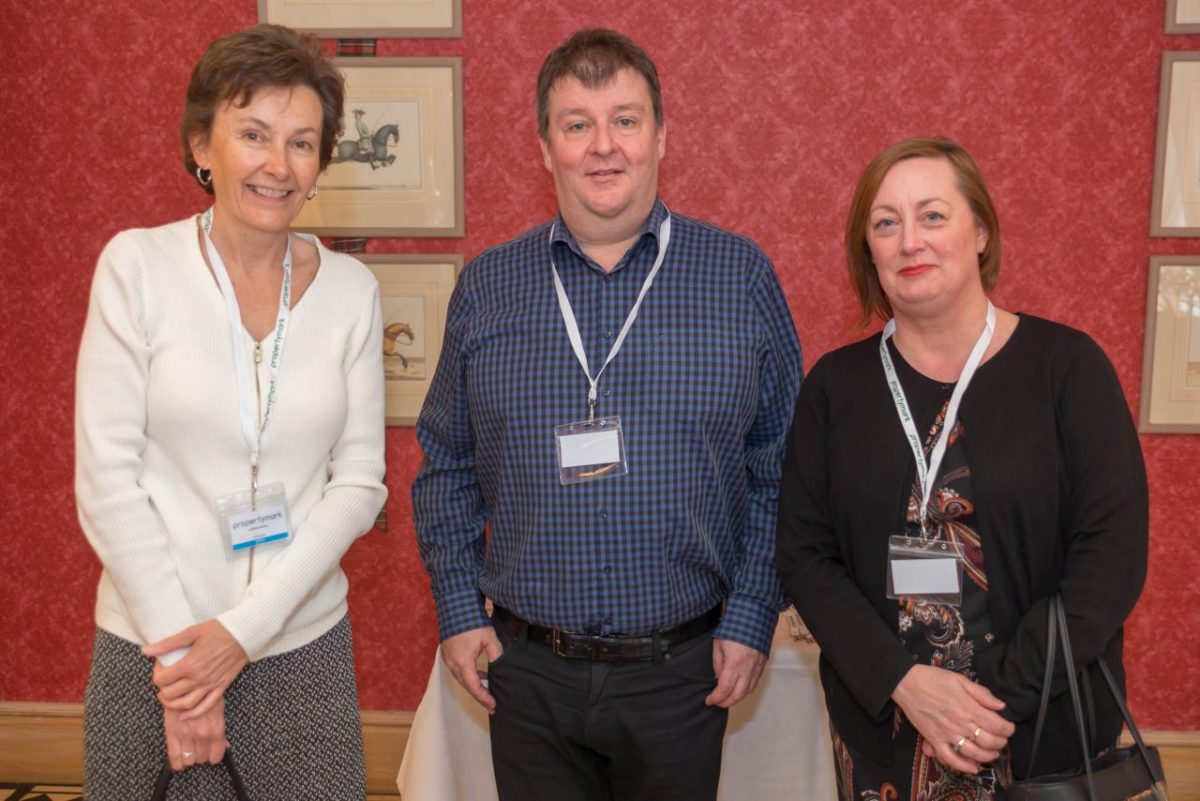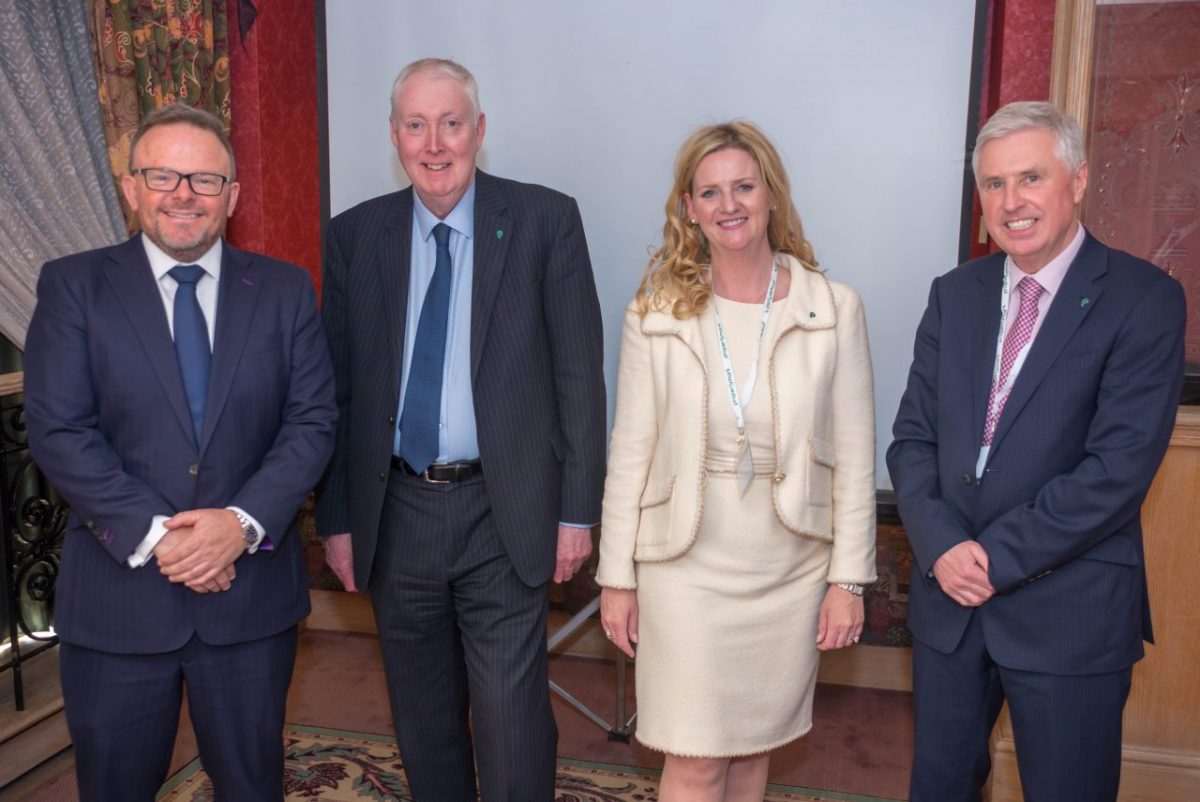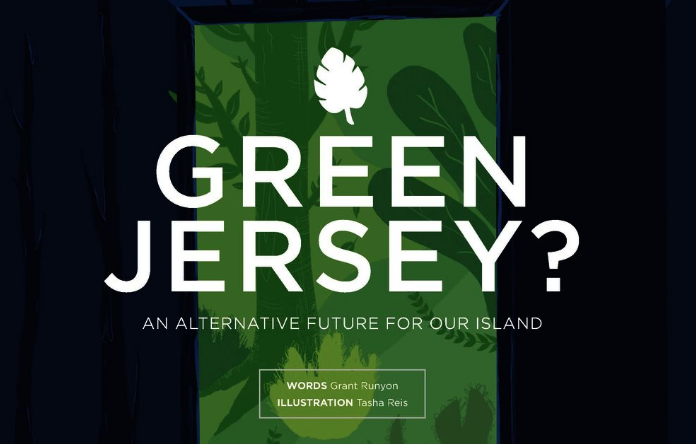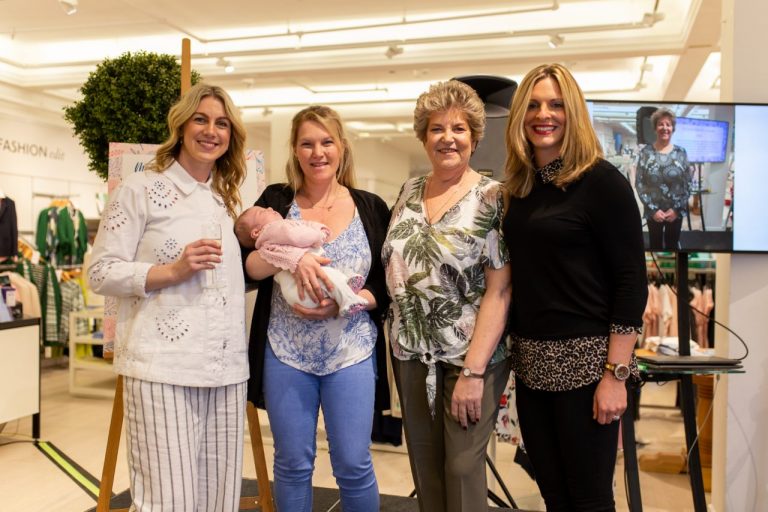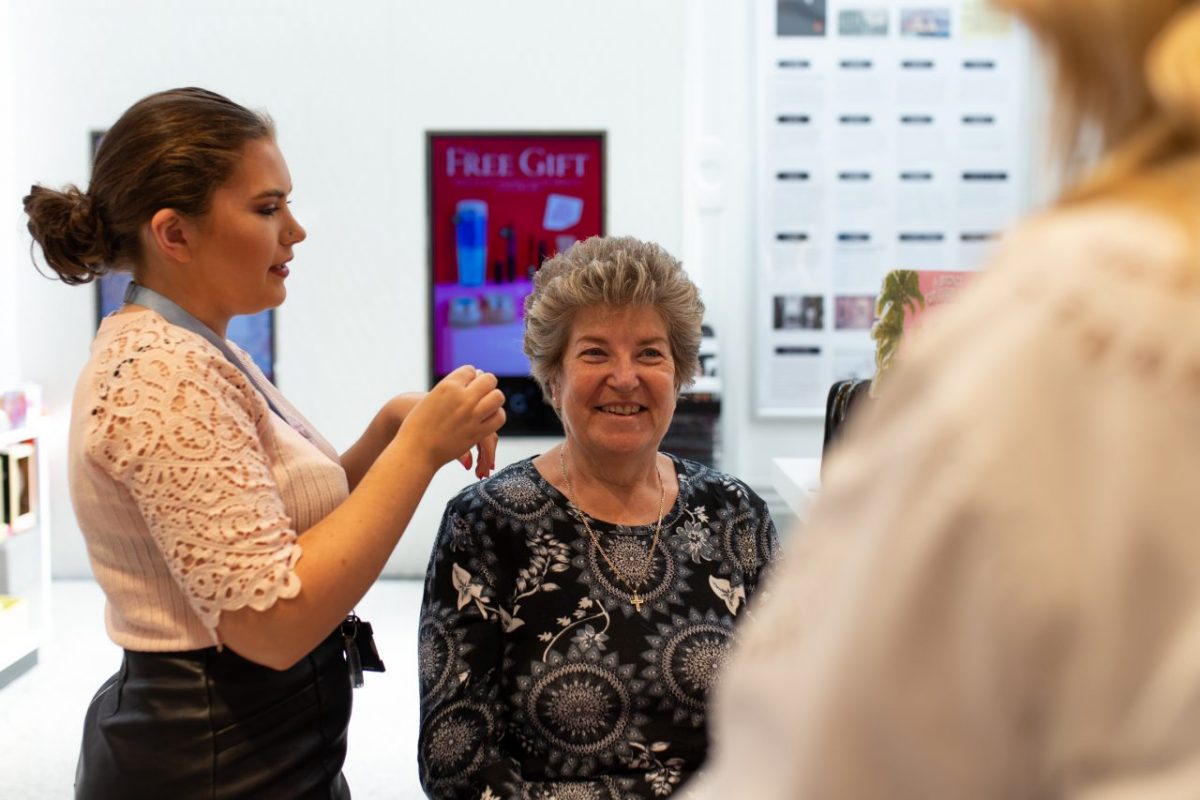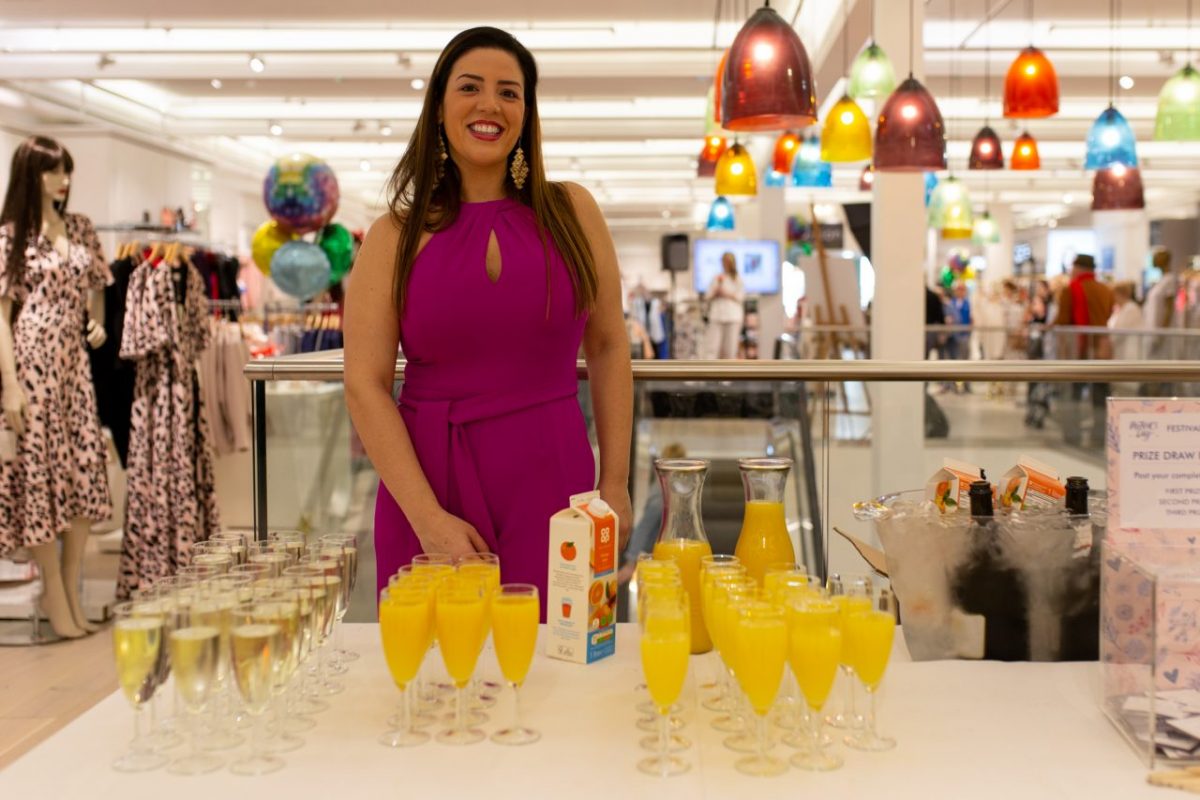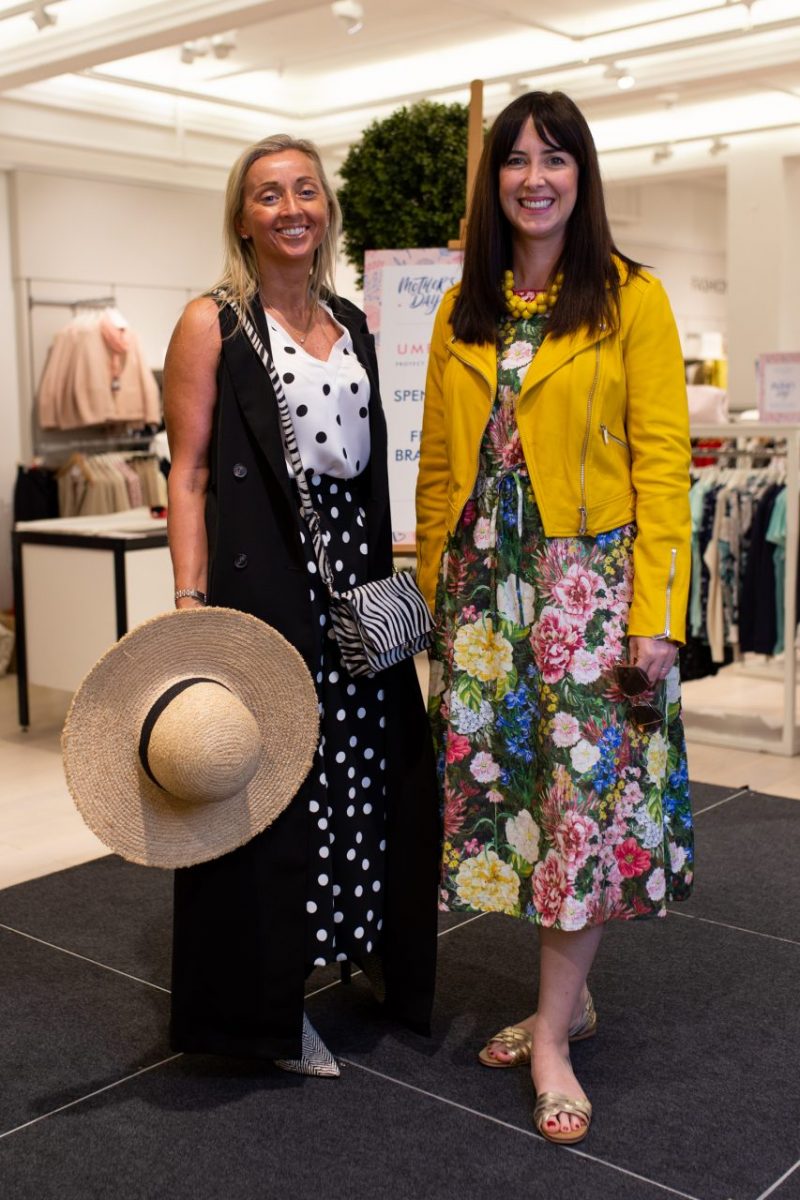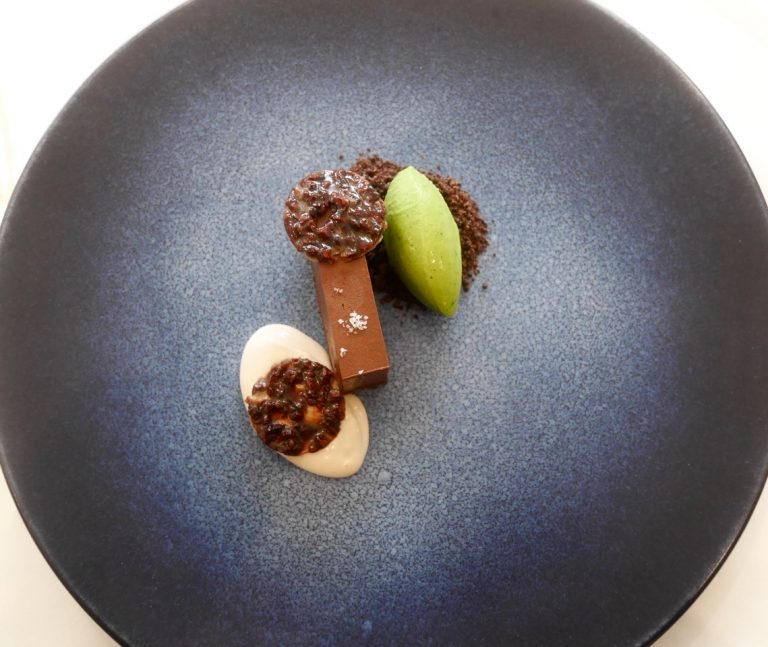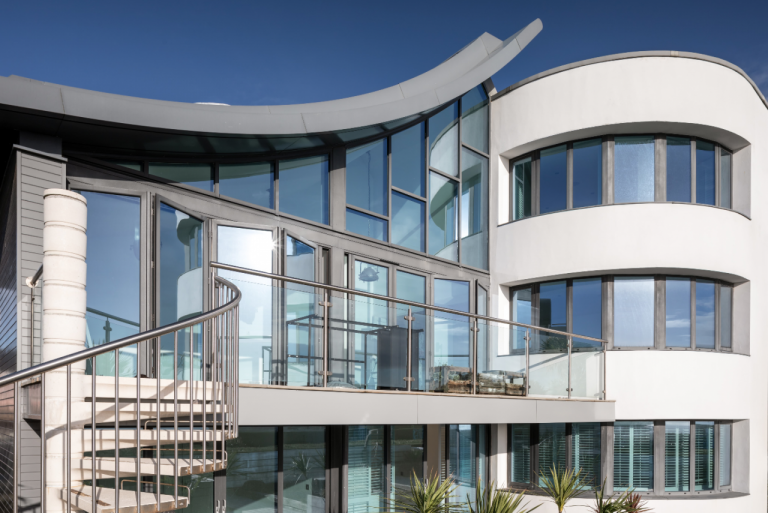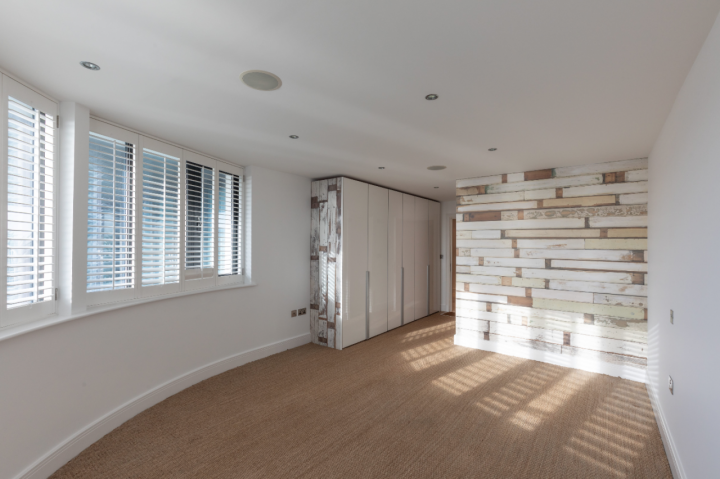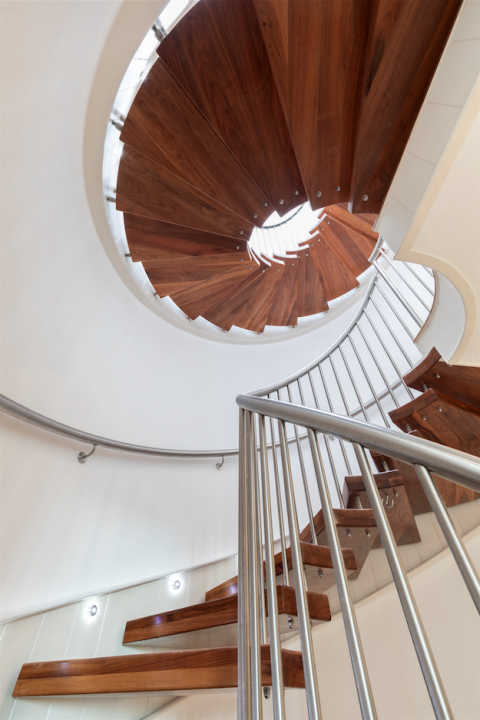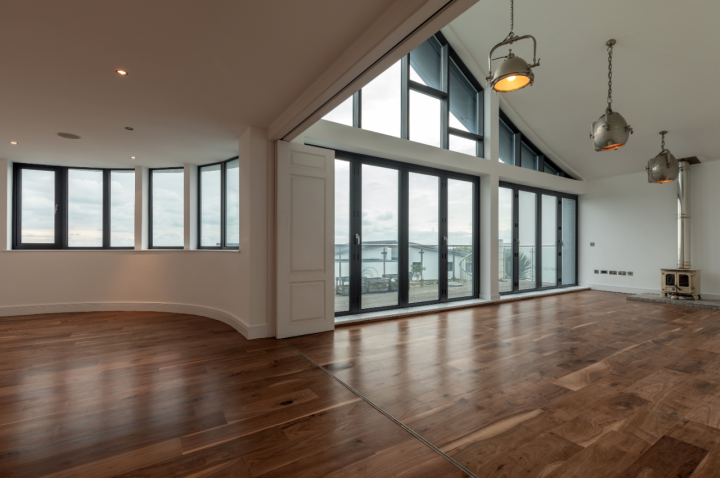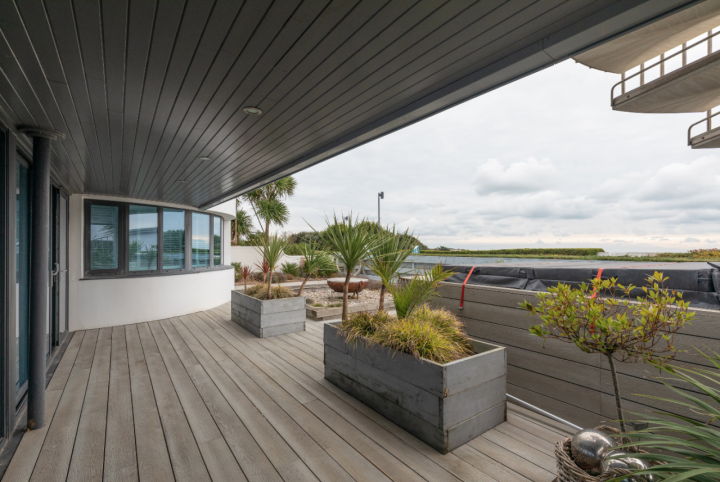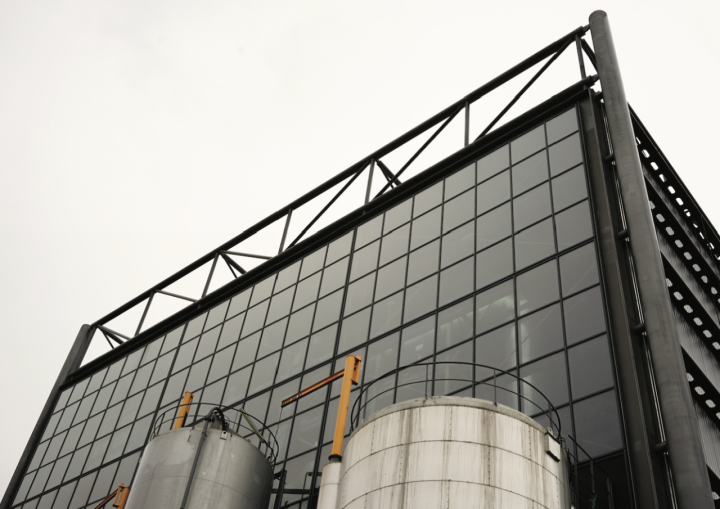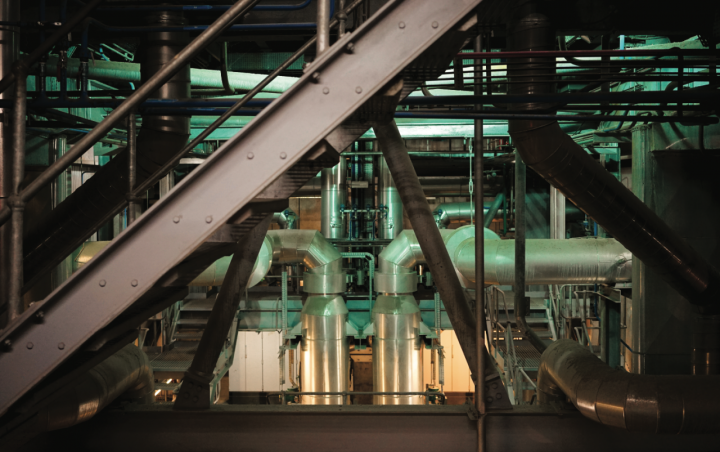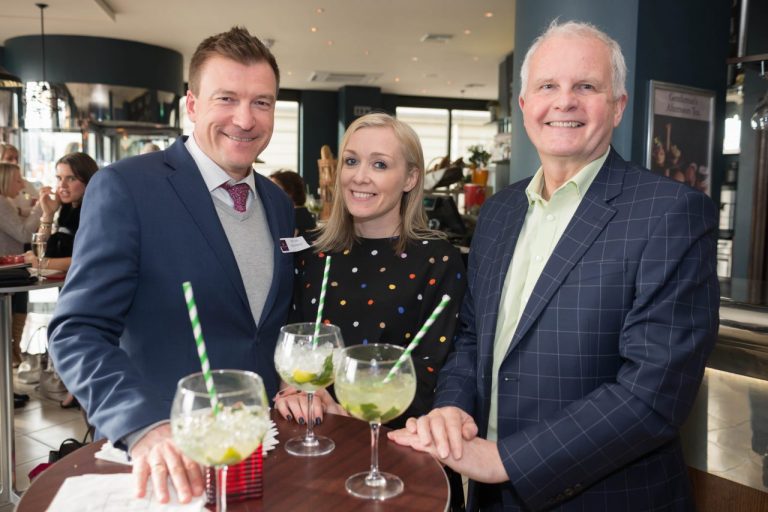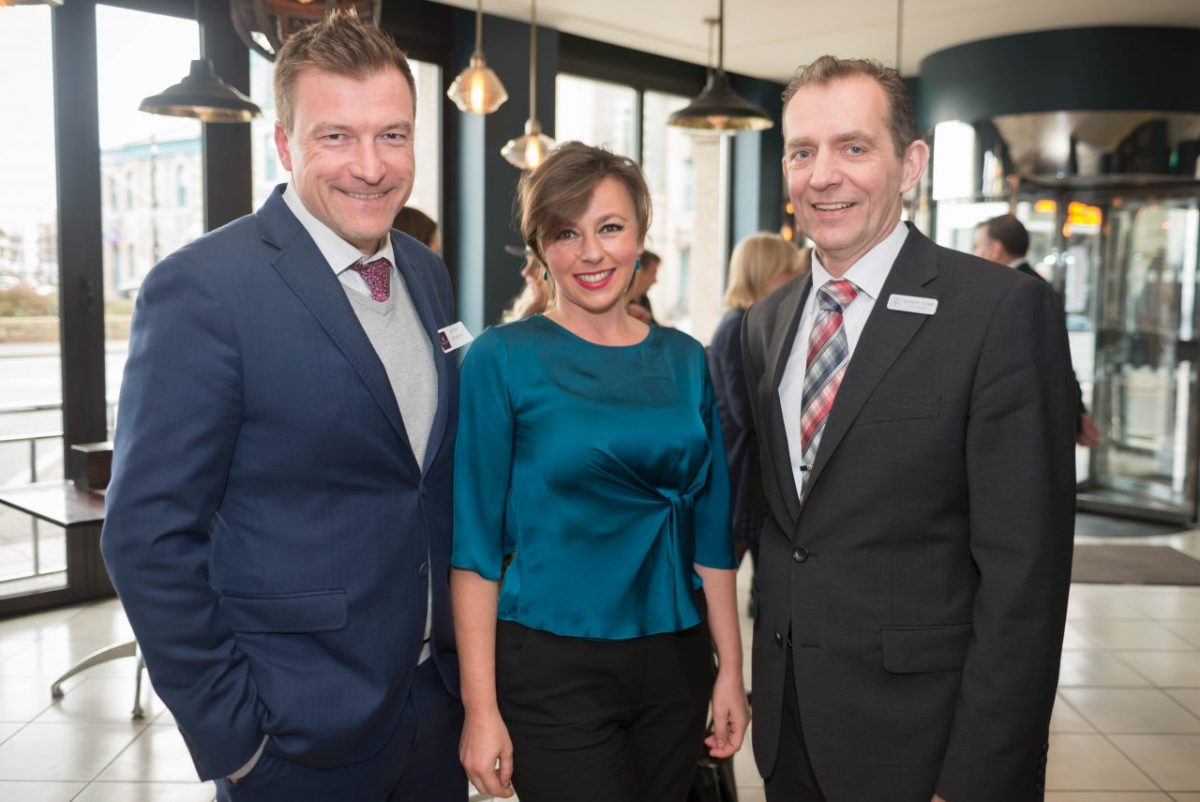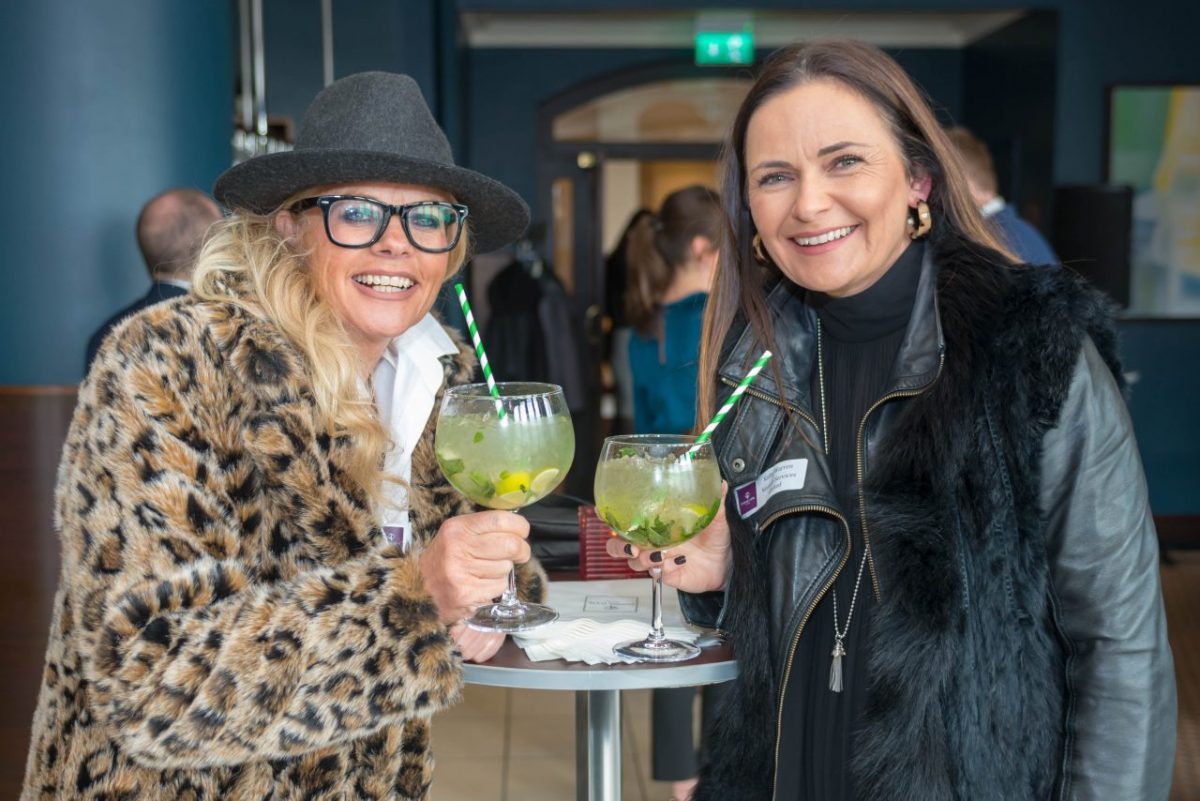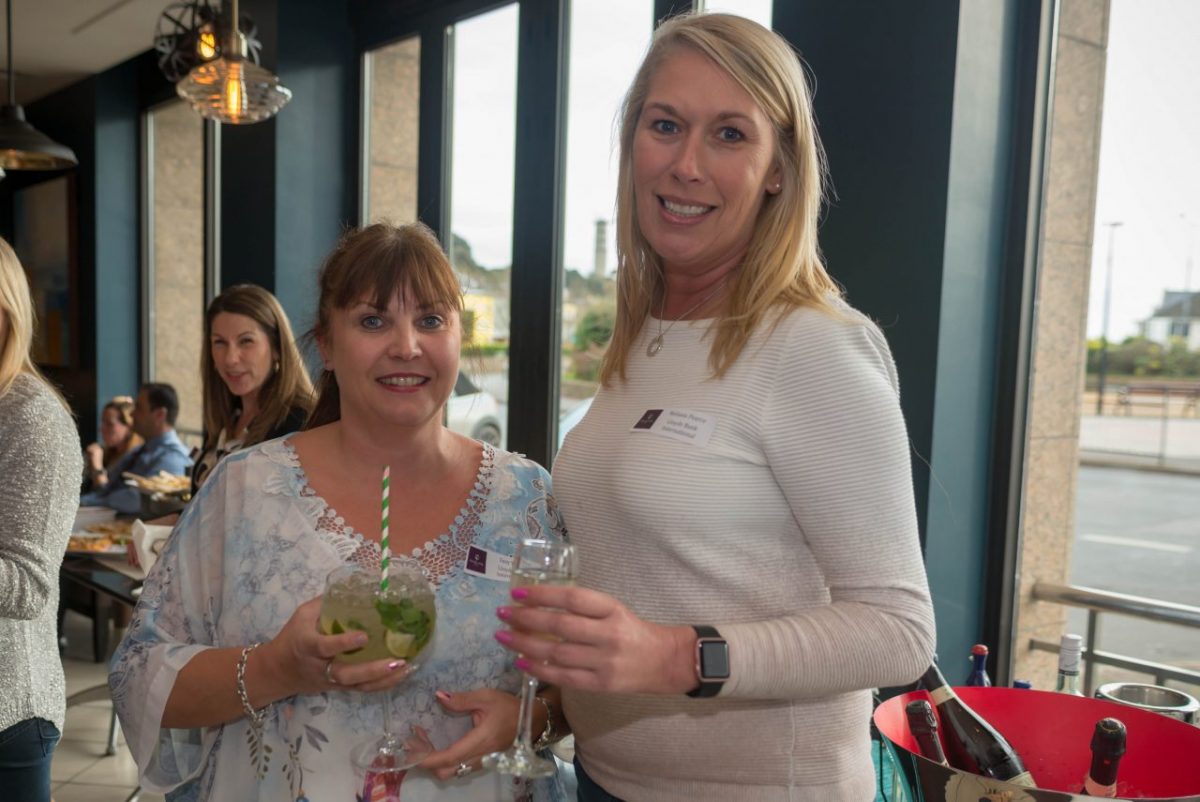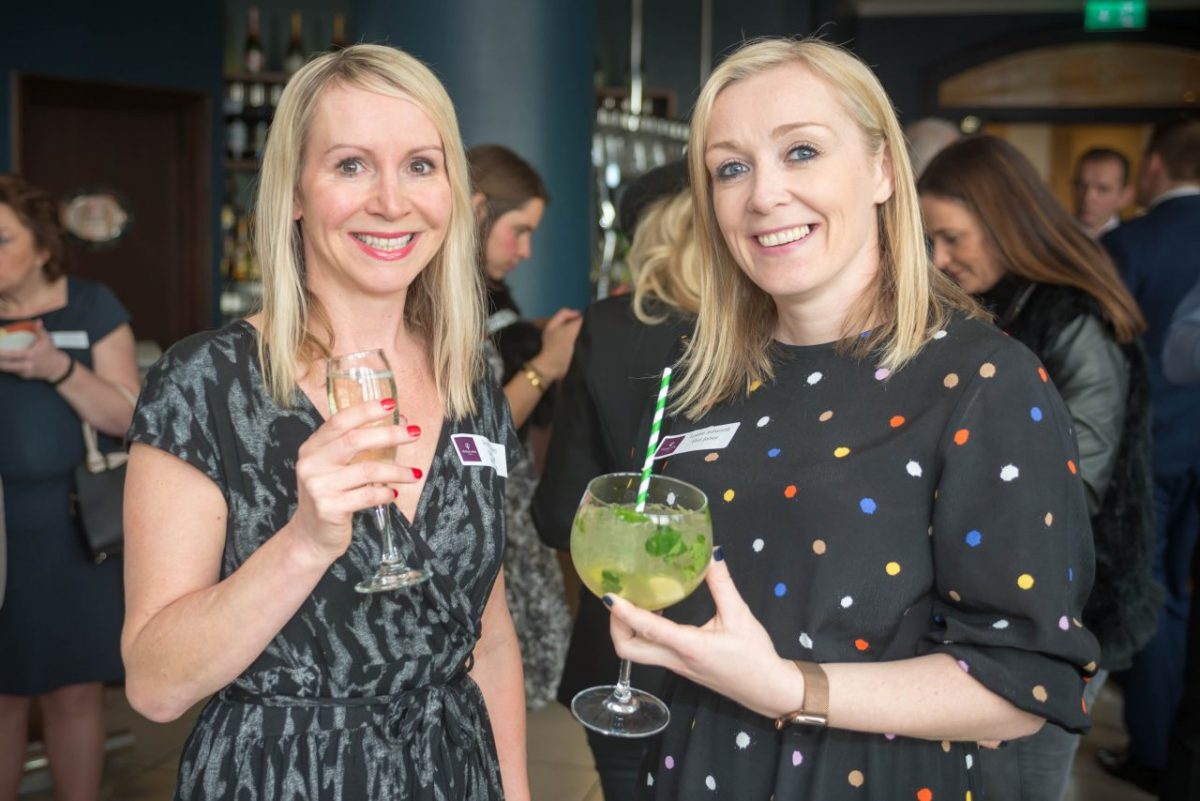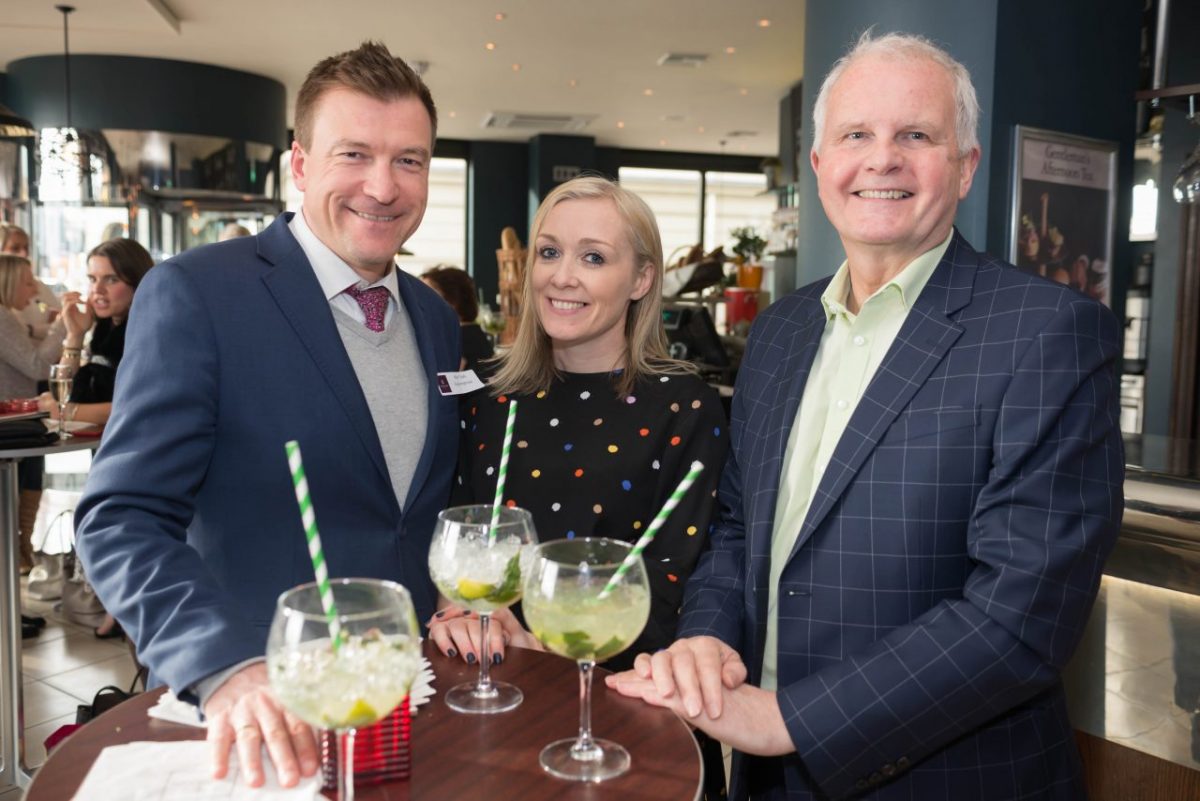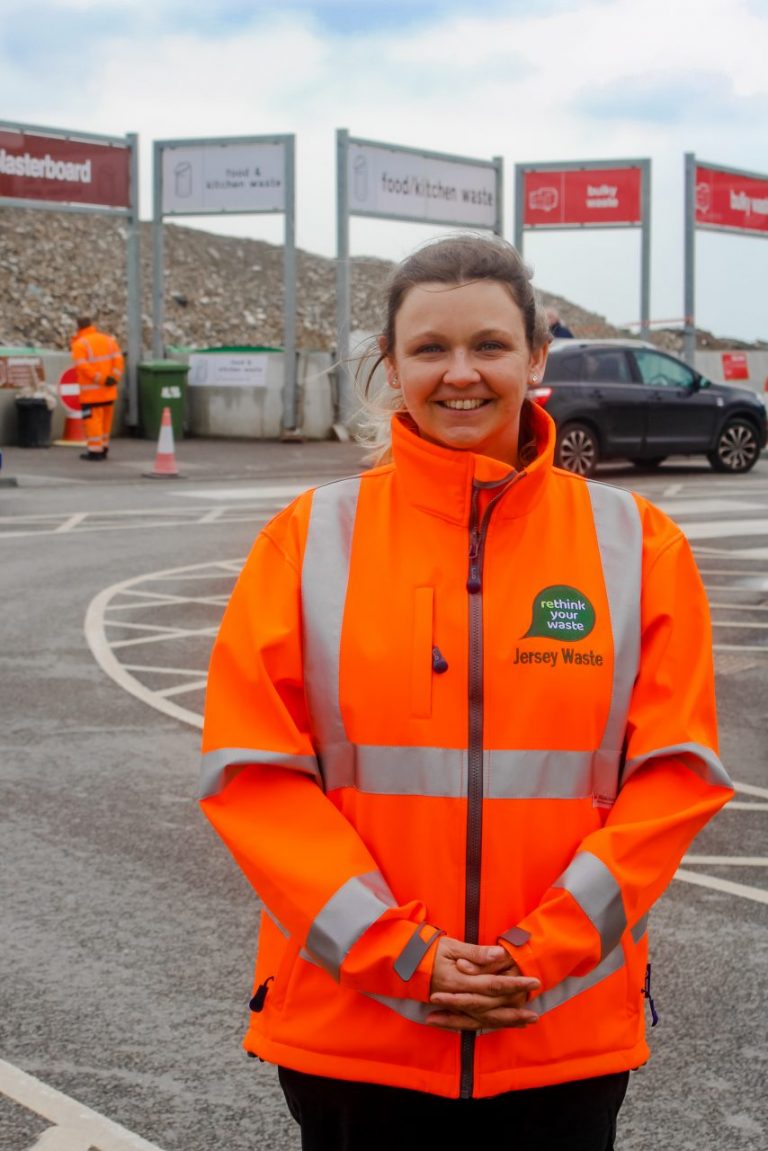Words: Imogen Pickering
We’ve all heard about how we should all be more environmentally friendly, be greener, more ecologically sound and how to live sustainably a thousand times. I’m sure I speak on behalf of many when I say that I at least try to make the right informed decisions when it comes to doing my bit for the environment, but who are the real pioneers when it comes to ensuring our island’s community is heading in the right direction? I met with a few of the industry leaders committed to making a difference, to find out more.
JOHN HILL
ACORN WOODSHACK

JOHN HILL IS RESPONSIBLE FOR THE SOCIAL ENTERPRISE, ACORN WOODSHACK; A WOOD RECYCLING WORKSHOP AND STORE FOR RECLAIMED TIMBER, UPCYCLED WOODEN FURNITURE AND QUALITY, LOCALLY-MADE GIFTS AND HOMEWARES.
The Acorn Woodshack was established in a bid to reduce the amount of timber waste going into the incinerator, after a survey undertaken by La Collette a number of years ago, revealed that of the variety of different products entering the waste stream, 49% was timber.
‘We have been trying to reduce this amount ever since, by reusing as much as we can. We don’t see timber waste as wasteful, but as a reusable commodity. This ethos can be applied to so many other waste materials that are produced every day and we work closely with the States Recycling Manager, Emma Richardson-Calladine, as well as AAL Recycling, to try to relay this message’.
Originally from a carpentry background, John first became aware of the island’s waste timber when undertaking research within his role at the Transport & Technical Services Department.
‘I was working within a team at TTS, as a charge-hand, undertaking building maintenance on behalf of the then Harbour Department. During this time, I enrolled in a year-long modern manager programme, and with three colleagues from different areas within TTS, came up with the idea of recycling as much timber waste delivered to the incinerator as possible. It was while researching this that my eco-conscience was awoken! Acorn had the foresight to see what a good environmental project it could be and I was seconded to get the business started some five years ago. The rest, as they say, is history!’
Not only does the global demand for timber increase the devastating threat of deforestation, John also highlights the detrimental effect on the environment that comes with the processing and delivery of this raw material.
‘Recycling and reusing timber ultimately helps to protect the environment. Reusing timber waste reduces the need for logging and halts the onset of deforestation, as well as the refining and processing of the material, all of which creates substantial air and water pollution. As recycling and reusing saves energy, it also reduces greenhouse gas emissions, which in turn helps tackle climate change’.
Aside from reusing in excess of 100 tonnes of waste timber per year, the main focus of Acorn is to provide employment, training and work experience to those with a disability or long-term health condition.
‘The most important benefit, from an Acorn/local point of view, is that by reusing a waste product to generate an income, we have been able to build an enterprise which provides a service to the community. To achieve this, we get our clients involved in all aspects of processing the timber we receive; from de-nailing, to producing custom orders, to creating products for our showroom at Acorn. With the help of our fantastic staff and clients, it’s a very worthwhile and rewarding job.’
John and the team work tirelessly to generate and income for charitable purposes, thus `giving back’ to the island. In doing so, they also provide sustainable timber productsfor low income families and local small businesses. They are able to provide clean, serviceable timber at 60% of the cost of new, produce bagged kindling wood for the local market made from unserviceable timber, as well as a wide range of wooden furniture made from reclaimed wood. In turn, they are able to reduce the amount of material imported to the island, reduce local waste and carbon emissions, and conserve a valuable natural resource.
‘I would urge any building and demolition companies or builders merchants who are looking for alternative solutions for their timber waste to contact me. With your help, we can make a difference to the local environment and community.’
FOR MORE INFORMATION, CONTACT JOHN AT JOHN.HILL@JET.CO.JE OR VISIT WWW.ACORN.CO.JE
INDIA HAMILTON
SCOOP

INDIA HAMILTON IS THE CO-FOUNDER OF JERSEY’S FIRST WASTE-FREE ORGANIC CO-OPERATIVE, SCOOP. HAVING RECENTLY REOPENED IN ITS NEW LOCATION AT LA BIENVENUE FARM IN ST LAWRENCE, THE SUSTAINABLE FOOD CO-OP INVITES ISLANDERS TO EMBRACE PLASTIC-FREE LIVING AND REDUCE WASTE, BY OFFERING A RANGE OF PACKAGING-FREE, ORGANIC AND ETHICALLY-SOURCED PRODUCTS.
India is part of a group of volunteers who take care of the shop’s daily operations, as well as focusing on the business-development side of the business.
‘As a group, we assign our roles based on our experiences and interests. I trained as a chef in London and ran an experimental catering company under my own name. I was also the Head Chef for nationwide projects focusing on food sustainability such as Pumpkin Rescue, Sainsbury’s Waste Free Town, Swandlincote and Future Proteins Programme. This experience then took me to India, where I consulted as a waste innovator and product designer for a circular economy/permaculture food supply chain, all of which I am now able to apply to the development of SCOOP.’
The idea for SCOOP was born out of The Morning Boat agricultural arts residency, run by Suzanne and Kaspar Wimberley. Having lived in Germany, where cooperative shopping flourishes, the Wimberleys brought to the island the necessary insight needed for a project of this kind. When Kaspar and India met through the Morning Boat’s Climavore project, their combined experience led to discussions which would lay the foundations for the growing success of the business today.
‘I’ve always enjoyed feeding people, but rather than the elitist, stressful race to food perfection that is Michelin star, I’ve always felt more connected to the challenge of affordably feeding good quality food to large numbers of people. The food sector is an incredible place to work; to be caring and conscientious, to be creative and problem-solve.’
And problem-solve she does – with India’s interest in the environmental impact of food not only being responsible for introducing plastic-free grocery shopping to the island, but also challenges the concept of food waste on the whole.
‘What’s becoming obvious at SCOOP is that when the system is redesigned to a more circular approach and food waste is converted into, at the very least, soil, the concept of waste changes. Its commercial viability changes and the bin then becomes a place for innovation, rather than the end of the life cycle. Jersey feels like the perfect place for B2B waste innovation and a shift towards a more circular approach to food waste – that’s the direction I’d like to see things going.”
With roughly 21 billion meals being eaten per day, it’s difficult to imagine the extent of global food waste, even if we were to leave just one item per meal. With the development of her business, India actively encourages islanders to become more conscious of their shopping habits to help reduce our overall food waste.
‘There are so many small shifts we can make that actively reduce food waste. For one, buying exactly what you need for a recipe. SCOOP’s concept is less about ‘bulk’ and more about buying precisely for your needs, which in turn not only reduces the risk of waste, but customers have also noticed a drop in their food bills as a result.’
With the environmental impact of food becoming more frequently discussed in mainstream media, we have seen a stark rise in vegetarianism and veganism in recent years, with arguments that the production and consumption of plant-based foods is more environmentally effective. India argues that the impact of food on the environment is far greater than choosing not to eat meat.
‘The world is what we eat. The purchase of food is a political, social, economic and cultural act. If you are looking to change your diet to help the planet, make sure you understand that it’s more than the ingredients that need consideration. You must look at the farming practice, the quality, how it’s transported, sold, produced, how the staff are being paid and how it’s disposed of. We can’t be sure that just switching from meat to vegetables alone will have any impact at all.’
FOR MORE INFORMATION, CONTACT INDIA AT INDIAMGHAMILTON@GMAIL.COM OR VISIT WWW.FACEBOOK.COM/SCOOPJERSEY
ELIS JOUDALOVA
OLIO
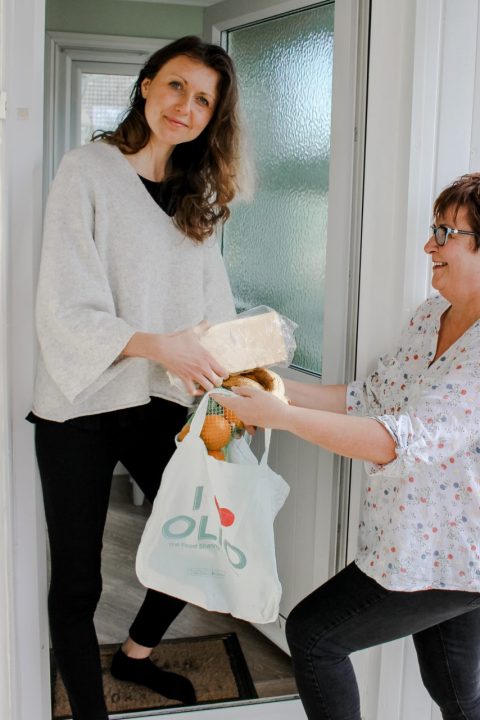
ELIS JOUDALOVA IS THE CHANNEL ISLANDS MARKET GROWTH MANAGER FOR GLOBAL FOOD-SHARING APP, OLIO. THE APP, WHICH WAS FOUNDED IN THE UK IN 2015, CONNECTS NEIGHBOURS WITH ONE ANOTHER AND WITH LOCAL BUSINESSES, SO THAT SURPLUS FOOD CAN BE SHARED, NOT THROWN AWAY. WHEN ELIS FIRST HEARD ABOUT THE APP TWO YEARS AGO, SHE JUMPED AT THE CHANCE TO BRING THE CONCEPT TO JERSEY AND INTRODUCE THE OLIO SHARING COMMUNITY TO THE ISLAND.
Born and raised in the Czech Republic, Elis developed an appreciation for food from an early age. ‘My Mum is the most amazing cook and she grows lots of fruit and vegetables in her garden. When I was young, we used to have chickens and rabbits as well, so I would spend a lot of time helping my parents grow and collect our own produce. This taught me from a young age how food is grown and it made me appreciate it very much.’
Elis’ childhood interest in food extended into adulthood, where she admits to becoming ‘a real foodie’ when she travelled abroad, working in kitchens and hospitality, as well as having many talented chefs in her social circle. After becoming aware of the global food waste scandal when moving to the UK, she decided to study International Tourism and Hospitality Management at university in London. With a focus on sustainability, she hoped that it would give her the tools to make a valuable difference in the future.
‘I was always a bit different in that sense. I always had many ideas to offer as solutions to problems. I knew a traditional career was not for me and that I wanted to make this world a better place one day. I was very frustrated to learn how much food goes to waste when I moved to the UK almost 13 years ago. I felt that people and retailers didn’t have the same level of connection and values about food as we do in the Czech Republic and I couldn’t understand why nobody appeared to be bothered. When I moved to Jersey over 5 years ago, sadly it was the same story.’
Food waste is one of the biggest contributors to climate change – a statistic 70% of Britons don’t realise. Globally, 30-40% of all food produced is not eaten, with 50% of food waste coming from our own homes.
‘With about 800 million hungry people in the world, it’s simply not acceptable. It’s been predicted that if we don’t improve our wasteful and largely commercialised food system, we won’t have enough food to feed the world by 2050! Being on an island with limited resources, it’s all the more important to not only treat food waste as a resource, but to also consider those who struggle financially. Through this role, I’ve become so aware of how much hidden poverty we have in Jersey. Food is a basic right and if we have lots to spare we should be using it to support those in need.’
Elis began her OLIO journey as an Ambassador & Food Waste Hero; a voluntary role on the basis of growing an OLIO community in a local area, as well as picking up unsold food from local shops and cafes to redistribute on the app.
‘At first, I was a one-woman-band, as nobody had ever used it here before. I had to promote it myself, talk to businesses to get them on board, load everything onto the app and share the food with others. I was doing it all myself for a few weeks, alongside my full time job, until my friends and the first few users of the app started to help, which was incredible. After that, it was like a domino effect and in 3 months, Jersey had become the most successful OLIO sharing community after the UK.’
Frequently shared as a success story to inspire other communities around the world, Jersey’s OLIO community now has 8000 users, with 75 volunteers aiding in saving 1-2 tonnes of food waste per week. Last summer, OLIO received further investment which saw Elis become their Market Maker for the Channel Islands, which allowed her to establish the OLIO community in Guernsey, which has also proved a great success.
‘It’s not hard to make little changes and avoid food waste. Make your freezer your best friend – you can freeze almost anything, including bread, which is one of the most wasted foods. Be more creative with your cooking. You can whizz up old fruit into smoothies and spare veg makes great soup. Alternatively, please join us at OLIO to collect and/or share spare food. It’s really fun, you get to meet some amazing people and it’s a community with such a feel-good factor!’.
FOR MORE INFORMATION, CONTACT ELIS AT ELIS@OLIOEX.COM, VISIT WWW.OLIOEX.COM OR DOWNLOAD OLIO FROM THE APP STORE.
EMMA RICHARDSON-CALLADINE
RECYCLING MANAGER
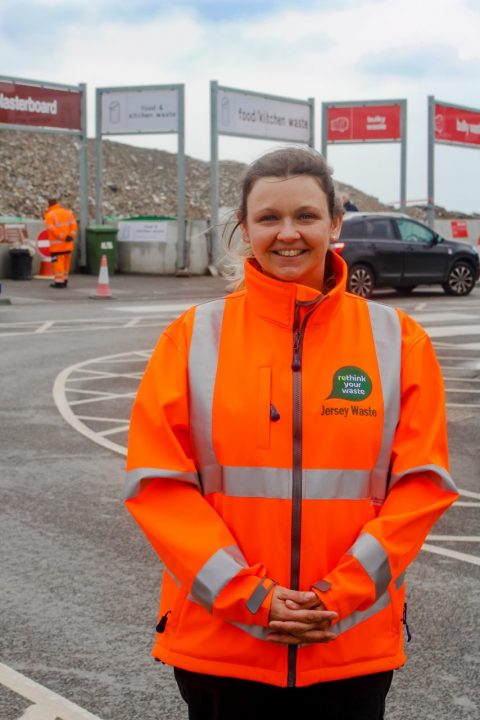
EMMA RICHARDSON-CALLADINE IS THE RECYCLING MANAGER OF THE GROWTH, HOUSING & ENVIRONMENT DEPARTMENT, WITH HER ROLE DEDICATED TO HELPING ISLANDERS CHANGE THEIR ATTITUDES TOWARDS HOUSEHOLD WASTE. FAR MORE THAN JUST RECYCLING, EMMA FOCUSES ON ENCOURAGING LOCALS TO THINK DIFFERENTLY ABOUT THE WASTE WE GENERATE, FINDING WAYS TO REDUCE OUR RUBBISH BY REUSING IT, AND THEN RECYCLING IT.
Located at La Collette, the Household Reuse and Recycling Centre is designed to encourage visitors to think of ways they can reduce waste, by finding alternative uses for items before recycling. Not only has Emma always had a keen interest in environmental science, but as a chartered marketer, she has a sound understanding of social marketing and how this leads to positive behaviour changes.
‘For people to reduce, reuse and recycle, it has to be easy and this a big part of my job. Everyone should have easy access to basic recycling, so I work with all of the parishes to help them provide a household recycling collection. We are halfway there with St John, St Mary, St Lawrence, Trinity, St Helier and St Brelade providing recycling collections and hopefully one more parish will join this list soon!’
As well as working closely with parishes to increase the likelihood of household recycling by making it easier, Emma also pays close attention to the design and functionality of the Household Reuse and Recycling Centre itself. Many will remember the uninspiring experience of visiting Bellozanne to recycle household waste a few years ago, where you would visit a few poorly labelled skips set amongst mounds of rubbish. Now, Emma and her team focus on enhancing the customer experience, to not only make household recycling easier and more enjoyable for visitors, but to also help reduce the amount we throw away.
‘The Household Reuse and Recycling Centre is designed to help you rethink your waste. The first step is to help our customers think about reuse before recycling – that is why the Acorn Reuse Centre is positioned at the site entrance. The Centre must make recycling easy and we use the signs and colours used nationally to identify where we collect each material.’
As well as being functional, the premise of the centre is to lead by example. In the construction of the building centre itself, the reclaimed steel frame from the demolition of the Jersey Potteries site in Gorey has been used to give the building its shape. Inside, furniture has come from office donations, the floor incorporates recycled waste glass, and outside the letters that spell out ‘reduce, reuse, recycle’ were crafted by local artist, Ian Rolls, from items donated by primary school children.
For items that can’t be reused, the vast majority of waste received at the centre is recycled on-island, with a few exceptions being transported to larger recycling sites in the UK and Europe. As head of the department’s Rethink Your Waste education programme, Emma works closely with top waste experts and regularly educates visitors on where each type of material goes to be recycled, and how important it is to make the right decisions for the environment as consumers, so that we have less rubbish to dispose of in the future.
‘Everything we receive for recycling is recycled – I’ve lost count of how many times I’ve said that, as so many people think there is a conspiracy surrounding Jersey’s recycling! We work very hard as a team to ensure Jersey’s recycling is processed safely and sustainably, and having to squash these conspiracies takes my time away from developing initiatives to help reduce Jersey’s waste and help us reuse and recycle more.’
Emma believes that recycling is a simple step we can all do to live more sustainably and her aim is to develop easy solutions to help more locals to recycle, whilst sharing information that helps us understand what can be recycled; where and why.
‘Recycling is something that everyone can do and this local behaviour has a global impact. By recycling, we are preserving natural resources for the future. You may not think that recycling one can or plastic bottle is important but all our efforts add up and this makes a difference!’
FOR MORE INFORMATION, EMAIL EMMA AT E.RICHARDSON-CALLADINE@GOV.JE OR VISIT WWW.GOV.JE
 This growing market could be worth as much as $17 billion globally, according to business magazine WatchPro, with dealers reporting rapid sales growth. Demand for pre-owned watches is so strong that even luxury conglomerate Richemont – a purveyor of, until recently, exclusively new luxury watches through its brands Cartier, IWC, Panerai et al – capitalised on the hype last year by buying out a dedicated pre-owned watch retailer. At the time, Richemont chairman Johann Rupert described the deal as enabling the group “to better serve the sophisticated needs of a discerning clientele”.
This growing market could be worth as much as $17 billion globally, according to business magazine WatchPro, with dealers reporting rapid sales growth. Demand for pre-owned watches is so strong that even luxury conglomerate Richemont – a purveyor of, until recently, exclusively new luxury watches through its brands Cartier, IWC, Panerai et al – capitalised on the hype last year by buying out a dedicated pre-owned watch retailer. At the time, Richemont chairman Johann Rupert described the deal as enabling the group “to better serve the sophisticated needs of a discerning clientele”.



